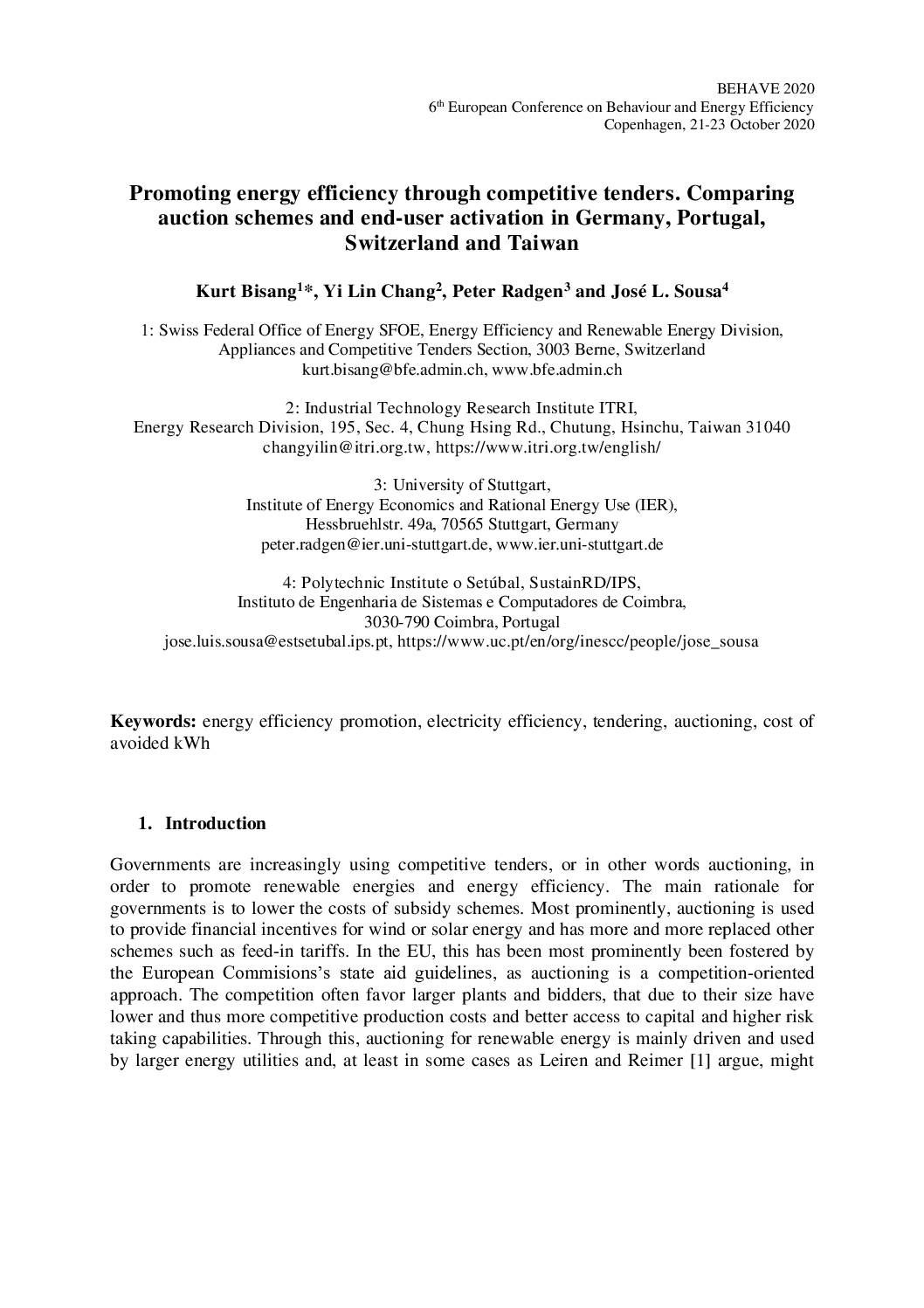Governments are increasingly using competitive tenders, or in other words auctioning, in order to promote renewable energies and energy efficiency. The main rationale for governments is to lower the costs of subsidy schemes. Most prominently, auctioning is used to provide financial incentives for wind or solar energy and has more and more replaced other schemes such as feed-in tariffs. In the EU, this has been most prominently been fostered by the European Commisions’s state aid guidelines, as auctioning is a competition-oriented approach. The competition often favor larger plants and bidders, that due to their size have lower and thus more competitive production costs and better access to capital and higher risk taking capabilities. Through this, auctioning for renewable energy is mainly driven and used by larger energy utilities and, at least in some cases as Leiren and Reimer argue, mighteven save traditional energy utilities from insolvency. In contrast to renewables, auctioning is not so often used for promoting and supporting energy efficiency measures. This paper explores how competitive tenders are currently used to incentivize end-user energy efficiency in Germany, Portugal, Switzerland and Taiwan. It also analyzes what target groups are most likely to respond to competitive tenders and what approaches may help to mitigate the over-representation of large enterprises and to stimulate the participation of small and medium enterprises and households.
Download sourceShare this

Sectors: Cross cutting, Power sector
Country / Region: Europe
Tags: climate friendly government subsidies, drives, energy efficiency, paper production, solar, solar photovoltaic, sustainable livelihoods approaches, target groups, targets, tenderingIn 1 user collection: Session 6b: Promoting sustainable energy behaviours: policy instruments, interventions and evaluation of effects
Knowledge Object: Publication / Report
Publishing year: 2020
Author: Kurt Bisang, Yi Lin Chang, Peter Radgen, José L. Sousa
Content:

